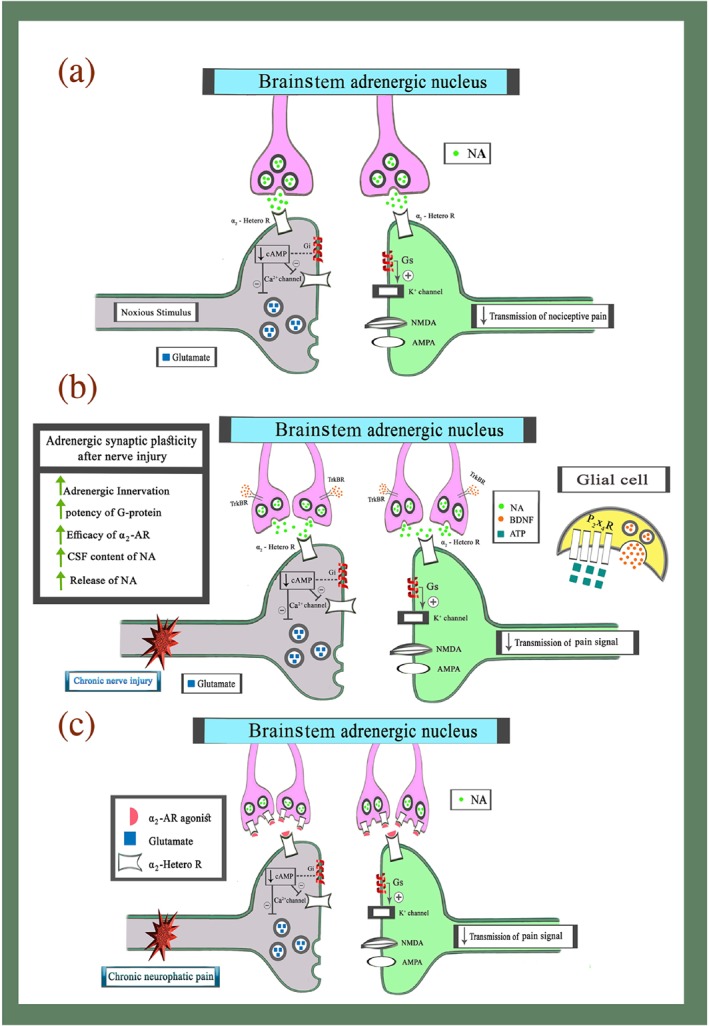Figure 1.

Brainstem inhibitory descending adrenergic modulation of pain in the physiological and the chronic neuropathic pain conditions. (a) Brainstem adrenergic inhibitory modulation of nociception in physiological condition. Application of noxious stimuli induces transmission of nociceptive information from ascending pathways to higher centres. At this time, noxious stimuli activate a brainstem adrenergic inhibitory pathways and increased the release of NA in dorsal horn from descending terminals. Activation of α2‐heteroreceptors on the presynaptic cell decreased entry of Ca2+ to cell and subsequently suppresses the release of glutamate and other stimulatory neurotransmitters via Gi‐protein activity. Additionally, the activity of α2‐heteroreceptors on the postsynaptic cell increased efflux of K+ from the cell and subsequently shift membrane potentials to a negative voltage via Gs‐protein activity. (b) Neuroplasticity changes in the brainstem descending adrenergic circuitries and the spinal cord in chronic neuropathic pain states. After nerve injury, up‐regulation of P2X4 receptors increased the release of BDNF from glial cells. The release of BDNF can induce descending adrenergic fibre sprouting and enhances analgesia effects of α2‐heteroreceptor agonists in chronic neuropathic pain. (c) Analgesic spinal effects of α2‐adrenoceptor (AR) agonist in chronic neuropathic pain. Although application of α2‐adrenoceptor agonist can induce analgesic effects via heteroreceptors on the pre and postsynaptic cells. However, in pharmacological studies α2‐adrenoceptor agonists can also decrease NA release from brainstem descending adrenergic terminals via autoreceptors and Gi‐protein activity in chronic neuropathic pain
